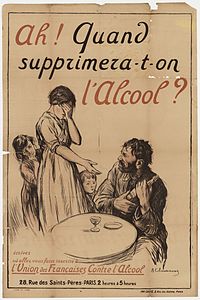
Photo from wikipedia
OBJECTIVE Our level 1 nursery and pediatric unit in a rural hospital adopted a family-centered, symptom-based oral morphine weaning protocol for neonatal abstinence syndrome (NAS) in 2009. Length of stay… Click to show full abstract
OBJECTIVE Our level 1 nursery and pediatric unit in a rural hospital adopted a family-centered, symptom-based oral morphine weaning protocol for neonatal abstinence syndrome (NAS) in 2009. Length of stay (LOS), treatment duration (TD), and hospital charges for infants treated for NAS were then compared to published data in neonatal intensive care units (NICUs) nationwide. METHODS The electronic medical records of infants born January 1, 2011, to April 1, 2017, whose discharge diagnosis included an ICD-9 or ICD-10 code for NAS or prenatal drug exposure were paired with maternal electronic medical record and reviewed. TD was calculated by subtracting the last day morphine was provided from the day it was started, and LOS was calculated by subtracting the discharge date from the date of birth. Infant characteristics, maximum Finnegan score, breastfeeding, discharge disposition, maternal demographics, prenatal use of drugs or medications, and toxicology results were abstracted. Predictors of TD and LOS were analyzed, and hospital charges were enumerated. RESULTS Chart review identified 167 infants with prenatal drug exposure, 33 of whom were treated for NAS. Median TD for infants with NAS was 18 days (range, 9-37 days) compared to 15 days (range, 9-25 days) in NICUs. Median LOS for infants treated for NAS was 22 days (range, 12-41 days) compared to 20 days (range, 12-32 days) in NICUs, but hospital charges were less. Maternal prenatal use of cocaine (P = .016) predicted LOS. CONCLUSIONS Family-centered NAS treatment in a rural hospital lasted 2 to 3 days longer than in NICUs, largely as a result of social issues; however, hospital charges were less.
Journal Title: Academic pediatrics
Year Published: 2018
Link to full text (if available)
Share on Social Media: Sign Up to like & get
recommendations!